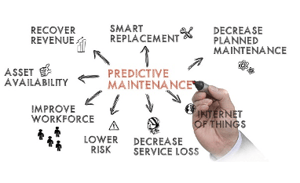16 August 2024
The information age has pushed businesses into the mobile world, equipped workplaces with technology, and increase in the mobile workforce. Mobile devices and other communication mediums can directly support and improve productivity. However, failures and performance issues in devices and communication processes can negatively affect productivity.
The growing amount of data by each mobile user is conducive to the development of data science around the globe. Data in its raw form consume resources that require costs. Still, on the other hand, data science applications can turn losses into profit by mining knowledge, intelligence and developing proactive processes to improve end-user experience.
VoicePlus' Predictive Maintenance:

VoicePlus' predictive maintenance is an application of Data Science to identifying potential faults of electronics and mechanical equipment. Predictive maintenance will detect the anomalies, failure patterns and provide early warnings prior to total equipment failure.
How we build our Predictive Maintenance Model
VoicePlus adopted a systematic approach and used advanced tools and algorithms.

Problem Analysis
VoicePlus has achieved predictive maintenance by analysing the problem and conducting research on the faults of Mobile devices to understand the significant cause of these faults. Once we had identified the cause of these faults, our next step was to extract data.
Data Engineering
We conducted research and identified factual data that could be used in our Data Analysis. The next step was to reprocess data to eliminate data inaccuracy and reduce the volume of data.
Data Analysis and Feature Engineering
Our data analysis phase objectives were to find correlations between variables and identifying key components that predict faults.
Machine Learning Models
Machine learning is often categorised by how an algorithm learns to become more accurate in its predictions. We built our customised Machine Learning Model by extracting features Deep Neural Networks, Long Short-Term Memory (LSTM) and Random Forest algorithm.
Deployment & Integration with VoicePlus Atrium
VoicePlus tested our machine learning model against historical data from different user groups and devices types. We then conduct modelling on a controlled user group with end-user feedback to refine our model further.
Our next stage was to incorporate our data collection, and machine learning models into our Atrium Managed Endpoint Services. The integration enables notification to end-user of potentially faulty equipment with a simple interface for the user to take the required actions.
Latest from the Blog
3 Strategies to Reduce Telecom Cost




